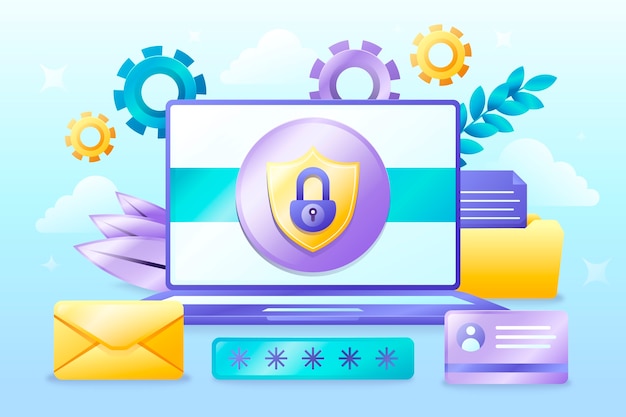Enhancing Security: Best Practices For Your SMTP Email Server
Email communication is a critical aspect of modern business and personal interactions. However, with the increasing frequency and sophistication of cyber threats, securing your Simple Mail Transfer Protocol (SMTP) email server is of paramount importance. In this article, we will delve into best practices to enhance the security of your SMTP email server, safeguarding sensitive information and maintaining the integrity of your communication channels.
Understanding the Significance of SMTP Security
SMTP is a standard protocol for sending and receiving emails across the Internet. Unfortunately, its simplicity makes it susceptible to various security vulnerabilities. Cybercriminals often exploit these weaknesses to launch attacks such as phishing, spoofing, and unauthorized access. Therefore, implementing robust security measures is essential to ensure the confidentiality, integrity, and availability of your email communications. Visit www.duocircle.com to discover more details.
Best Practices for SMTP Email Server Security
Use Encryption Protocols
Implementing Transport Layer Security (TLS) for your SMTP server is crucial for encrypting the communication between mail servers. TLS ensures that the data transmitted between the sender and recipient remains confidential, reducing the risk of eavesdropping and man-in-the-middle attacks.
Authentication Mechanisms
Enforce sender authentication through SPF and DKIM. SPF helps verify the authenticity of the sender's domain, while DKIM ensures the integrity of the email content. Combining these authentication mechanisms helps prevent email spoofing and protects against phishing attempts.

Implement Strong Password Policies
Enforce strong password policies for email accounts, requiring a combination of uppercase and lowercase letters, numbers, and special characters. Regularly prompt users to update their passwords to mitigate the risk of unauthorized access due to compromised credentials.
Access Control Measures
Adopt Role-Based Access Control (RBAC) to restrict access to the SMTP server based on users' roles and responsibilities. Limiting privileges to only essential personnel reduces the likelihood of unauthorized configuration changes or malicious activities.
Regular Security Audits and Monitoring
Conduct regular security audits to identify vulnerabilities and ensure compliance with security policies. Implement Intrusion Detection Systems (IDS) to monitor for anomalous activities and potential security breaches. Analyzing server logs can provide insights into suspicious behavior and aid in timely response.
Firewall Configuration
Configure firewalls to segment your network and implement Access Control Lists (ACL) to control traffic flow to and from the SMTP server. This helps mitigate the impact of potential security breaches by isolating the server from unauthorized access.
Update and Patch Management
Regularly update your SMTP server software and operating system to patch known vulnerabilities. Cybercriminals often exploit outdated systems, so staying current with security patches is essential to safeguard against potential threats.
Regular Security Audits and Penetration Testing
- Conduct periodic security audits and penetration tests to identify vulnerabilities proactively.
- Utilize ethical hacking techniques to simulate real-world cyber attacks and assess the resilience of your SMTP server.
Implement Session Management Controls
- Enforce session timeouts to automatically log out inactive users and prevent unauthorized access due to unattended sessions.
- Monitor active sessions to detect and respond to suspicious activities in real-time.

Geo-Location Filtering
- Implement geo-location filtering to restrict access to the SMTP server based on the geographical location of users.
- This adds an extra layer of security, preventing unauthorized access from unexpected or high-risk locations.
Data Backup and Recovery
Implement a robust backup strategy for your email data, including configuration settings and user accounts. Regularly test the backup and recovery process to ensure data integrity and develop a comprehensive disaster recovery plan to minimize downtime in the event of a security incident.
Email Encryption for End-to-End Security
Consider implementing end-to-end encryption using protocols like Pretty Good Privacy (PGP) or Secure/Multipurpose Internet Mail Extensions (S/MIME). These encryption methods provide an additional layer of security, ensuring that even if intercepted, the content of emails remains unreadable to unauthorized entities.
Two-Factor Authentication (2FA)
Mandate the use of Two-Factor Authentication (2FA) for accessing email accounts. 2FA adds an extra layer of verification, typically requiring a secondary code sent to the user's mobile device. This significantly reduces the risk of unauthorized access, even if login credentials are compromised.
Regular Security Training for Users
Educate users about the importance of email security through regular training programs. Users should be aware of phishing techniques, the significance of strong passwords, and the potential risks associated with opening attachments or clicking on links in emails. A security-conscious culture among users is a crucial line of defense against social engineering attacks.
Email Filtering and Anti-Spam Solutions
Deploy robust email filtering and anti-spam solutions to automatically detect and filter out malicious content. These solutions can identify phishing attempts, malware-laden attachments, and suspicious links, preventing them from reaching users' inboxes.
Incident Response Planning
Develop a comprehensive incident response plan outlining the steps to be taken in the event of a security breach. This plan should include communication protocols, roles and responsibilities, and a clear escalation path. Being well-prepared ensures a swift and effective response to mitigate potential damages.
Regular Security Compliance Checks
Regularly assess your SMTP email server's security against industry and regulatory standards. Compliance checks help identify any gaps in security measures and ensure that your organization adheres to relevant data protection and privacy regulations.
Vendor Security Assessment
If you rely on third-party solutions for your SMTP server, conduct thorough security assessments of these vendors. Ensure they follow industry best practices and have robust security measures in place to safeguard your email infrastructure.

